All About Hilocereus
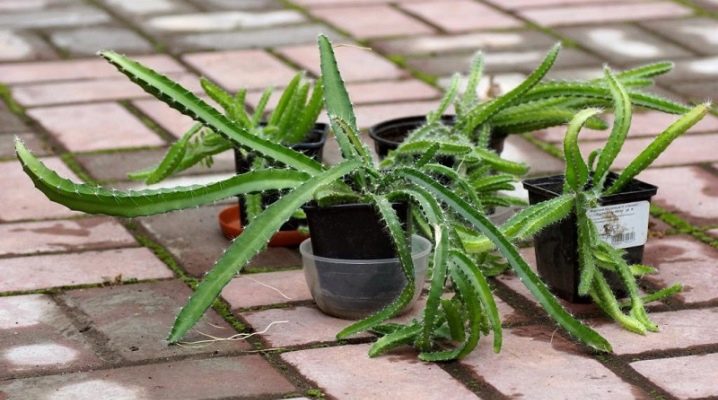
With the rise in popularity of Hilocereus, there is a predictable increase in the number of novice and more experienced gardeners eager to learn all about this amazing plant. This representative of a huge family is known in the appropriate environment as the "king of cacti", and it is unlikely that he can be confused with any kindred.
One of the main features of Hilocereus is the unique aroma that emanates from the plant during the active flowering period and has a calming effect.
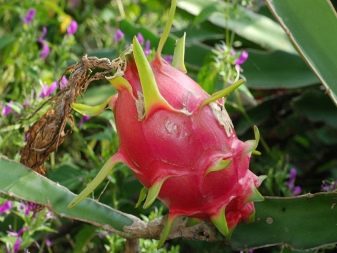
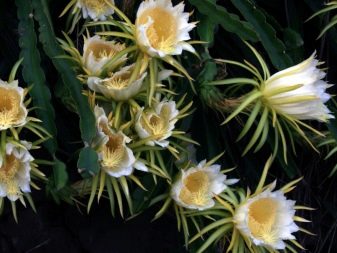
general description
The homeland of this cactus is considered to be the territory of Central America. Moreover, quite often the "king of cactus" is found in the subtropical and tropical jungles of other continents.
The plant can often be found on shrubs and trees. It seeks to reach their tops, braiding the trunks along the way. By the way, the aborigines called the fruits of hilocereus, which have good taste, as dragon apples.
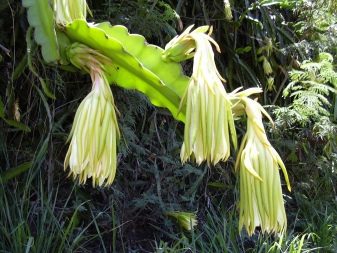
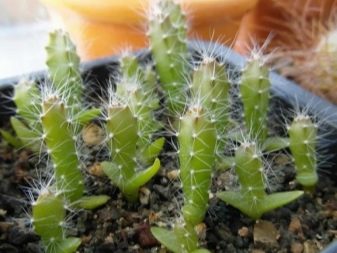
Analyzing the key features of one of the largest cactus, it is necessary to highlight the following most important points.
- Hilocereus has solid dimensions. Vines equipped with needles can grow in length to a record 5-meter mark (some varieties can stretch up to 15 m). Moreover, the thickness of such shoots is 60-80 mm. It is equally important that the "king of cacti" is showing good growth rates.
- The shoots of the plant are characterized by unusual contours and fleshiness. Depending on the type, they can be 4-sided or have triangular contours in cross-section. Along the entire length of the stem, its edges are decorated with relatively soft spines. It is also worth noting that filamentous roots are formed in internodes, with the help of which the plant feeds.
- Flowers can be called the real pride of hilocereus, because they hold the record for size among all representatives of the largest family. Outwardly, the buds look like crowns, the diameters of which range from 10 to 40 cm. White dominates in the palette of petals, but you can often find specimens with bright purple corollas. One of the key features is that blooms can only be seen at night. With proper care and favorable conditions in captivity, the plant can delight owners with unique flowers up to 5 times a year.
- The fruits of this record-breaking cactus have a pinkish tint and white flesh with seeds in the form of small dots. Unfortunately, due to the lack of the necessary pollination when grown at home, Hilocereus does not bear fruit.
It is worth noting that the described type of cacti is appreciated not only for edible and tasty fruits. We are also talking about the chic and graceful buds of the plant. Often, hilocereus perform the functions of decorative hedges in areas. It is important to take into account the ability of a cactus to grow quickly and actively.
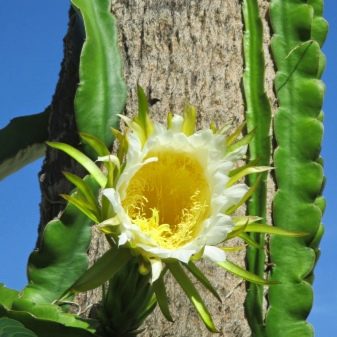
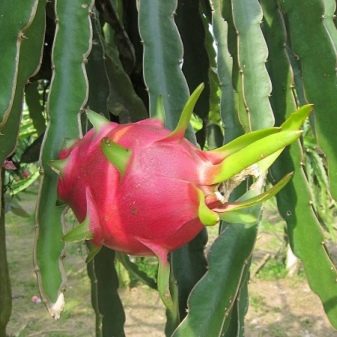
Views
The genus described includes 25 species, and almost all of them, with proper care, can be grown at home. But it is worth highlighting the most common representatives of this rather large family, the list of which includes the following hilocereus.
- Costa Rican. In its homeland, this species is of industrial importance. The fruit of this hilocereus is in high demand outside Costa Rica.

- Narrow-winged. The most compact variety of the "king of cacti", whose height does not exceed 15 cm. Purple and pink petals appear on chestnut stems, and fruits up to 70 mm in size are formed.
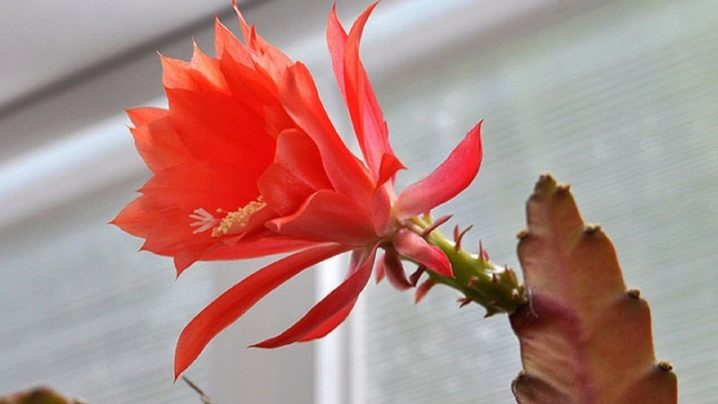
- Trihedral. This ampelous hilocereus literally amazes with its 20-meter stems, which have a light green color. Brownish thorns are located on them in bunches.
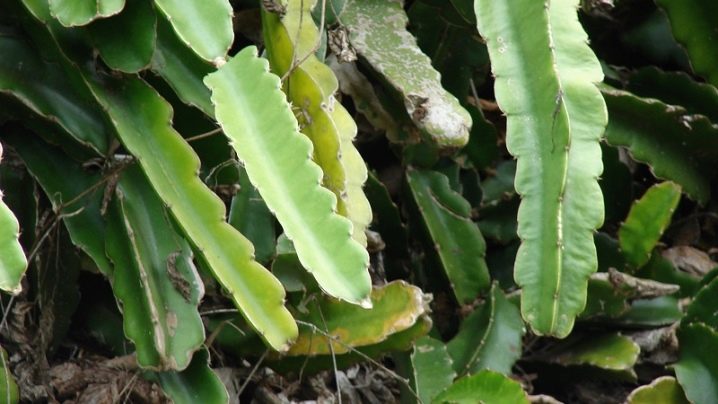
- Wavy. In their natural habitat, strong, but flexible shoots of this species, whose thickness is up to 80 mm, can grow up to 15 m. By the way, in southern countries, these cacti are widely used to create unique hedges. Another characteristic feature is the abundance of fairly long needles. For home cultivation, the Skyline variety was specially bred in due time.
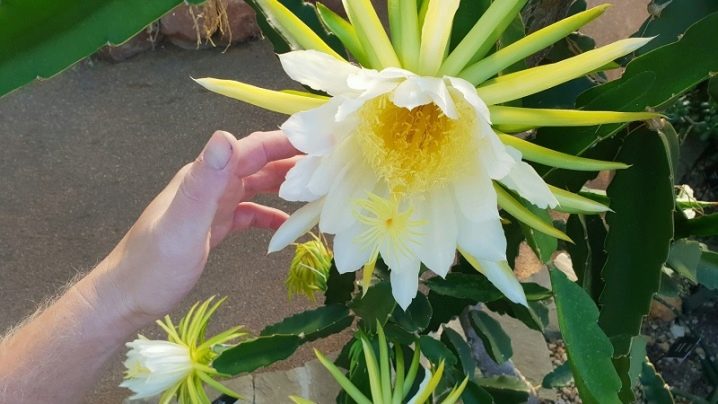
- Triangular. A type of cactus that has light green stems, which are periodically decorated with 20 cm in diameter flowers and red fruits. The plant is widespread in Haiti, Jamaica and Cuba.
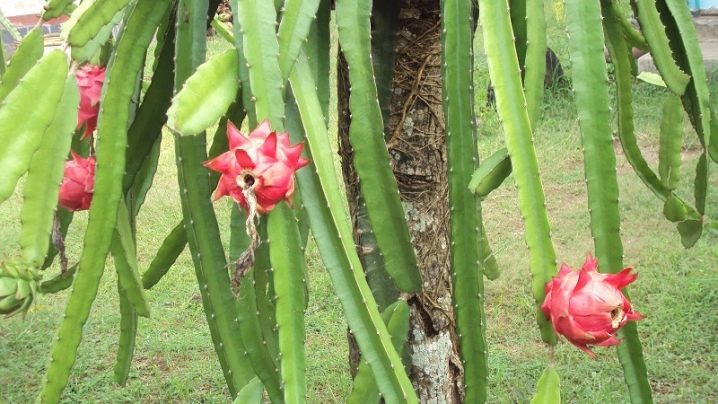
- Field. This type of hylocereus is characterized by sinuosity of shoots with a large number of bundles of yellow thorns. In length, the stems are able to stretch up to a two-meter mark. Also, the list of features includes large (up to 0.3 m in diameter) flowers and pinkish fruits with a melon aroma.
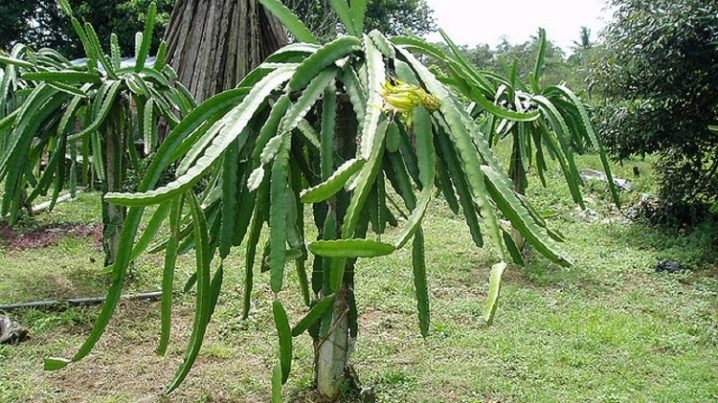
- Okampsky. A variety that can be found in Mexico and the vastness of Guatemala. They recognize the cactus by its blue-green shoots, white blooms, as well as fragrant and tasty yellow fruits.
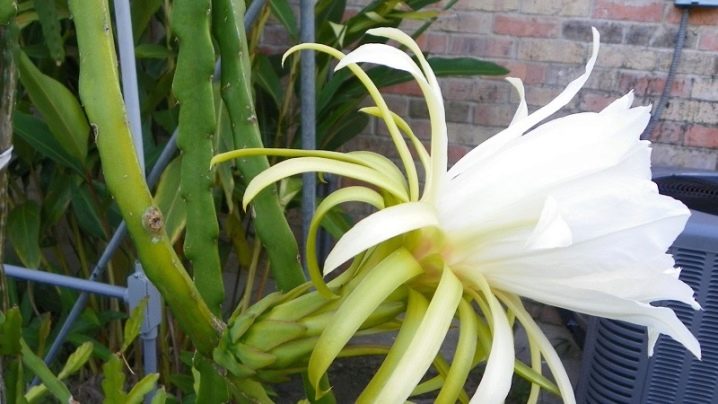
Growing secrets
The described category of cacti does not require any unusual and special care. But, despite the fact that the hilocereus does not belong to capricious plants, it is strongly discouraged to ignore the key rules of agricultural technology. And in this case we are talking about the following most important points related to the cultivation of the "king of cacti".
- The soil, which should be neutral and with low acidity, must be prepared in advance.
- With a lack of sunlight, as a rule, it is not necessary to count on the flowering of a cactus.
- Hilocereus needs at least 60% humidity. During the operation of heating systems, the use of humidifiers is recommended.
- In the spring-summer period, watering is carried out once a week, while in winter, monthly irrigation is sufficient. It is necessary to use settled water.
- Fertilizers are applied twice per season of active growth. In winter, plant feeding is not required.
In addition to all of the above, it is worth paying attention to such an agricultural technique as a cactus transplant. In the case of hilocereus, such procedures can be performed exclusively in the spring.
It is necessary to take into account the increased sensitivity of the plant roots and the risk of negative consequences in the form of stress.
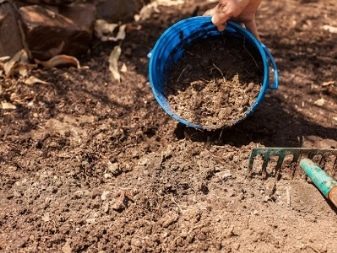

Reproduction
You can get a new specimen from an adult Hilocereus from seeds or by cuttings. One of the key points of the first breeding method will be the correct selection of the seed. Experienced growers strongly recommend using seeds of a maximum of 2 years of age. In this case, it is important that the material is dried and fully matured.
The procedure is as follows:
- a drainage layer is created in the container;
- lay a mixture of sheet soil and sand in equal parts;
- distribute the seed and deepen it by 10-15 mm;
- moisten crops from a spray bottle and cover with a film;
- place the container in the room with the thermometer readings at the level of 20-22 degrees.
If everything is done correctly, the seedlings will sprout in 20-21 days.
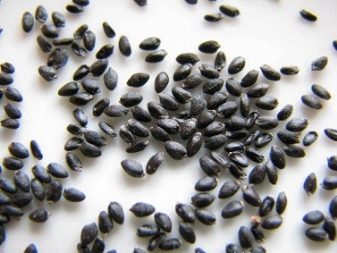
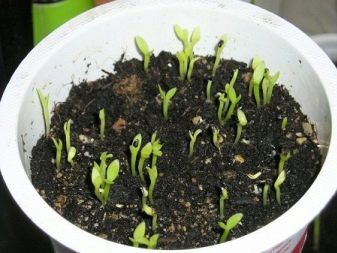
When propagating a cactus by cuttings, you must:
- choose a healthy and strong shoot as a donor and carefully separate it from the plant;
- leave the future material in the air so that it dries a little;
- after two days, plant the cutting in the ground;
- spray the seedling and place it in the shade;
- wait for the rooting of the cutting, which will take about a month.
The next step will be to accustom the young to the sun's rays. They begin to "walk" the cacti under the sun for 1-2 hours, gradually increasing the duration of the sessions. As a rule, after a week, new shoots are transferred to their permanent place.

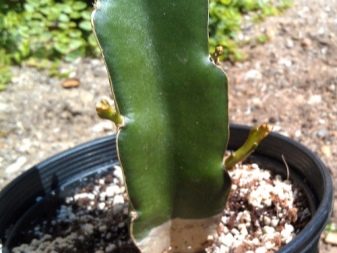
Pests and diseases
As the long-term practice of growing the "king of cacti" proves, neglect of the rules of care and maintenance inevitably creates quite serious problems. Unfortunately, in some situations, with illiterate and untimely measures, the plant cannot be saved. The main thing is to identify the symptoms of diseases and pest attacks in time.
If the root system of a cactus is affected by rot, then an unpleasant odor will appear emanating from the soil. Indicators of a lack of lighting and a deficiency of nutrients in the soil will be the following phenomena:
- the stems have become soft;
- shoot growth slowed down significantly;
- there is no flowering for a long time.
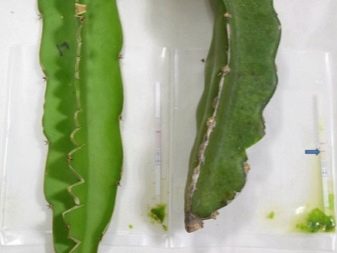
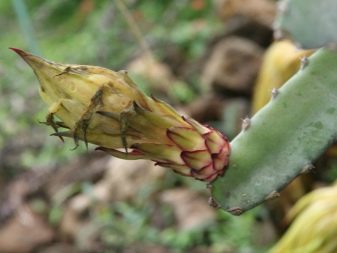
Various types of rot are the most common nuisance of hylocereus growers. And in the overwhelming majority of cases, improper watering provokes their development. For other diseases, this type of cactus has a good natural immunity.
If we talk about pests, then the owners of the "king of cacti" most often have to deal with mealybugs and spider mites. Both parasites attack the plant, usually amid drought and heat. The most effective insect control will be insecticides.
For the purpose of prevention, it is recommended to maintain the air humidity at an optimal level, as well as to prevent overheating of the hylocereus.
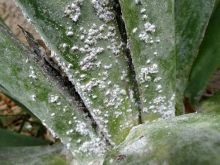

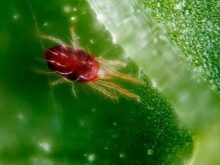























































The comment was sent successfully.